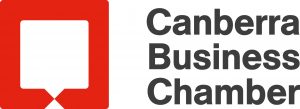
Significant investment by the ACT Government has secured the ACT’s water supply to such an extent that it is unlikely the Territory will need to implement high level water restrictions in the foreseeable future, even in years of drought.
The new Cotter Dam wall has increased holding capacity of the reservoir from 4GL to 79.4GL.
However, many Canberrans lived through the Millenium Drought, which lasted over a decade before ending in 2010. This drought is believed to be one of the worst ever recorded and it subsequently brought water supply to the forefront of the public consciousness.
In the ACT, people and businesses learned new habits to reduce water use and invested in their own water storage equipment in order to do their bit.
Despite the end of the Millenium Drought in 2010, there has been no clear bounce back in per capita water consumption.
The Independent Competition and Regulatory Commission (the ICRC) recently issued a draft Tariff Review as the basis for determining the prices that Icon Water (ICON) will be able to charge in the ACT for its water and sewerage services.
This document outlined the current water tariff structure and proposed changes for the ACT.
On behalf of business, the Chamber made a submission to the Tariff Review.
The current structure in the ACT has a low basic supply charge, and then two levels of quantity charge.
The lower charges apply to the basic quantity of water an average household consumes, then additional water above this volume costs a higher rate.
This structure excessively penalises large commercial users, when the intent is to provide an incentive for efficiencies by domestic water uses. This has resulted in large users moving to off-network water supply options (e.g. recycling, individual water extraction and water storage) to reduce their costs, leading to reduced demand for water.
High basic utility costs represent an opportunity cost in business investment that could otherwise be redirected to target business growth and increased employment. For small and medium businesses with high water needs that cannot move to off-network options, this imposes an unreasonable cost which reduces national and international competitiveness.
The Review proposed a new structure that would increase costs to smaller water users and reduce costs for larger users.
Like the current structure, commercial and residential water use would all be charged through a uniform tariff arrangement.
The Chamber argued that no single tariff structure can incentivise efficiencies for residential users and protect large commercial users from excessive costs. These two imperatives require opposite pricing structures.
Therefore, it proposed that non-residential and residential tariffs be treated separately and that draft tariff structures be developed that:
- For residential users keep fixed supply costs low, but provide price-based incentives to ensure water use efficiencies are maintained.
- For large volume nonresidential users provide discounts that ensure they remain significant users of ICON water infrastructure. These discounts reflect the importance of these customers to supporting the ongoing maintenance and development of infrastructure.
- Note that in the ACT a very large proportion of businesses are small to medium in size and therefore there is a need to balance low usage charges with reasonable supply charges.
- More complex scarcity based pricing measures could be implemented for both residential and non-residential users to generate flexibility to gather greater revenue when water scarcity increases costs in supply, and where efficiencies for all users are desirable to protect water security. For example, when water storages drop below a pre-determined threshold, a multiplier could be applied to water tariffs.
To keep things simple, the Chamber suggested businesses operating from residential premises not be considered commercial and be exempted from these arrangements.
Canberra Business Chamber called on the ICRC to develop a revised tariff structure recognising the different needs and drivers for commercial and residential users and go back out to the community for further consultation.
The Chamber’s submission is available at www.canberrabusiness.com
Join us for Chief Minister Andrew Barr’s annual Canberra Business Chamber address.
Thursday 6 April, lunch 12-2 pm, Hotel Realm. To register visit: www.canberrabusiness.com/events/
Robyn Hendry, CEO
Canberra Business Chamber
Contact the Canberra Business Chamber
Team: Phone: 02 6247 4199
Email: [email protected]
Web: www.canberrabusiness.com

